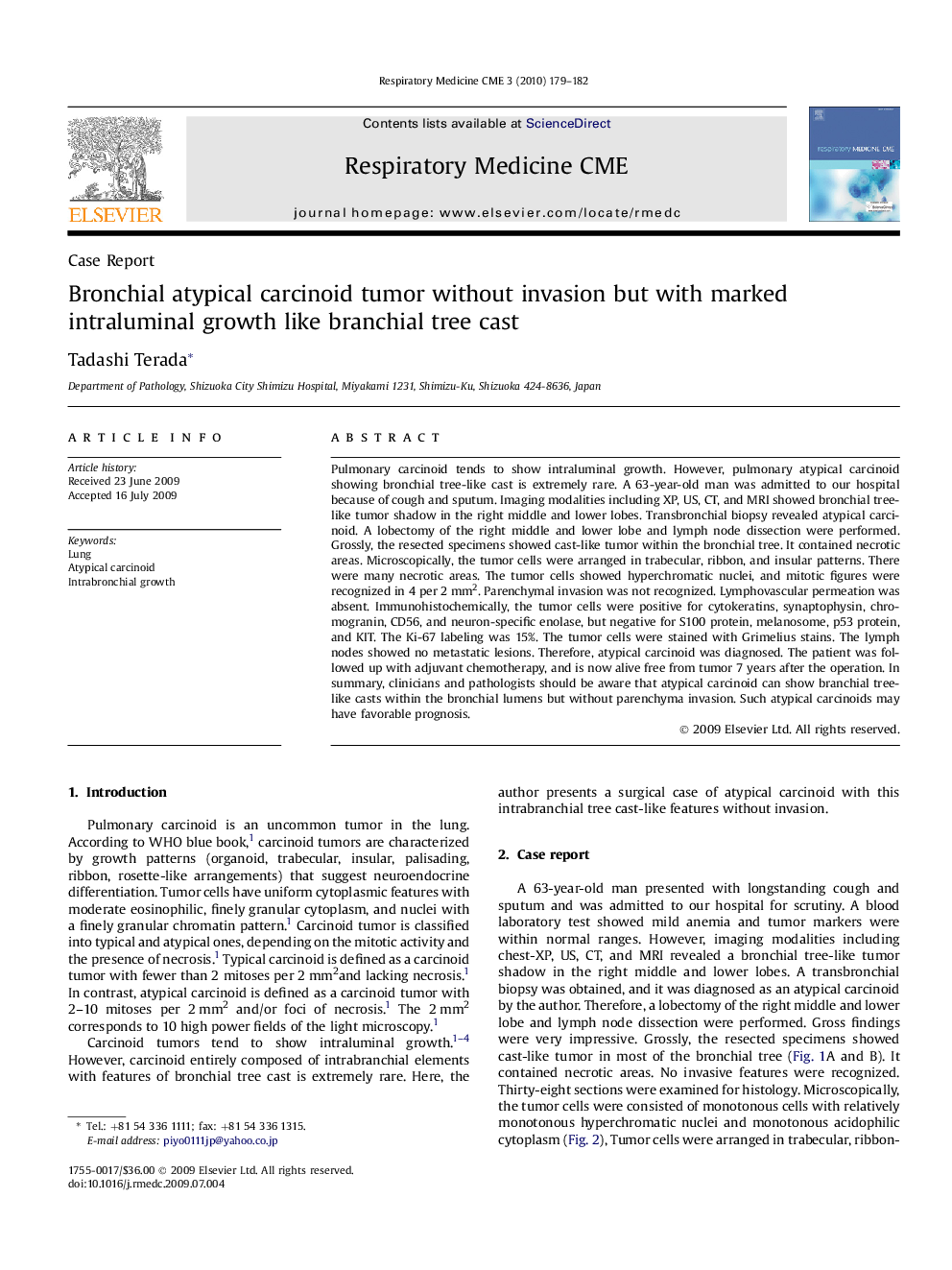| Article ID | Journal | Published Year | Pages | File Type |
|---|---|---|---|---|
| 4213064 | Respiratory Medicine CME | 2010 | 4 Pages |
Pulmonary carcinoid tends to show intraluminal growth. However, pulmonary atypical carcinoid showing bronchial tree-like cast is extremely rare. A 63-year-old man was admitted to our hospital because of cough and sputum. Imaging modalities including XP, US, CT, and MRI showed bronchial tree-like tumor shadow in the right middle and lower lobes. Transbronchial biopsy revealed atypical carcinoid. A lobectomy of the right middle and lower lobe and lymph node dissection were performed. Grossly, the resected specimens showed cast-like tumor within the bronchial tree. It contained necrotic areas. Microscopically, the tumor cells were arranged in trabecular, ribbon, and insular patterns. There were many necrotic areas. The tumor cells showed hyperchromatic nuclei, and mitotic figures were recognized in 4 per 2 mm2. Parenchymal invasion was not recognized. Lymphovascular permeation was absent. Immunohistochemically, the tumor cells were positive for cytokeratins, synaptophysin, chromogranin, CD56, and neuron-specific enolase, but negative for S100 protein, melanosome, p53 protein, and KIT. The Ki-67 labeling was 15%. The tumor cells were stained with Grimelius stains. The lymph nodes showed no metastatic lesions. Therefore, atypical carcinoid was diagnosed. The patient was followed up with adjuvant chemotherapy, and is now alive free from tumor 7 years after the operation. In summary, clinicians and pathologists should be aware that atypical carcinoid can show branchial tree-like casts within the bronchial lumens but without parenchyma invasion. Such atypical carcinoids may have favorable prognosis.
